My project aimed to create a magical forest diorama that had two distinct states. The first state is when the trees glow a bright red. Each tree had 3 red LEDs hidden amongst the foliage. It is always on when the main tree is removed from the platform. The main tree has a small magnet on the bottom that activates a normally open reed switch. When the magnet is present, the circuit switches to powering blue LEDs instead. Just like the other LEDs, these are hidden inside the foliage of the trees. Some additional decorations like glowing mushrooms, crystals, and animals were scattered about.
The Circuit:
I used this project as a way to challenge my analog design skills and I have never really used a MOSFET before. I got some help from a professor who translated my logic into transistors and diodes. Since I did not have the correct parts, I translated my design into MOSFETs that I had laying around.
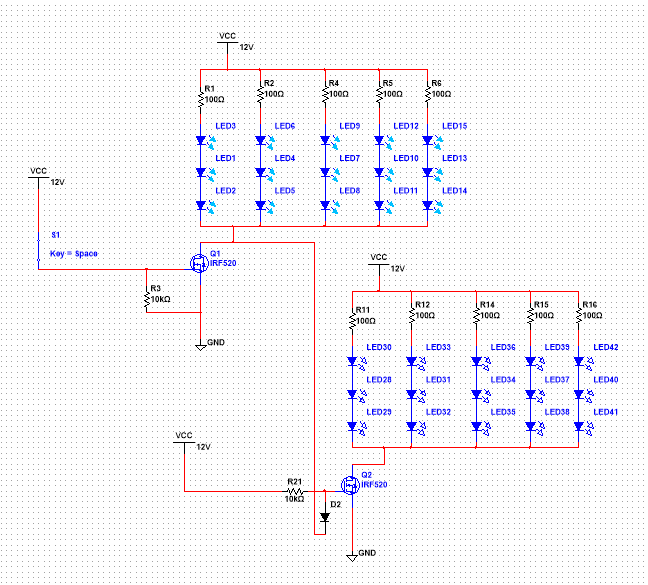
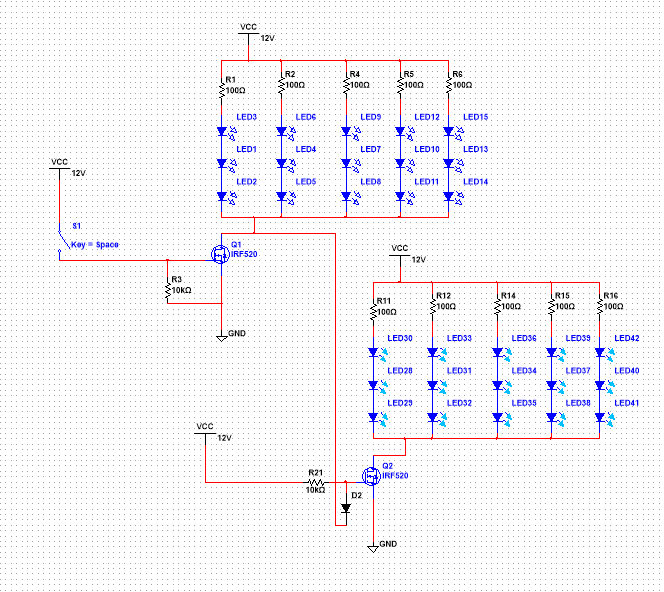
3D Printing:
Most of the models I found for this project were free STLs. The trees and crystals could be randomly generated with OpenSCAD. This saved me as I could make a variety of props without having to individually model them. This project required a lot of 3D printing. These prints failed for a variety of reasons. The big mushrooms failed so much due to how small I scaled them down to. Most of the time, I simply needed to restart the print.
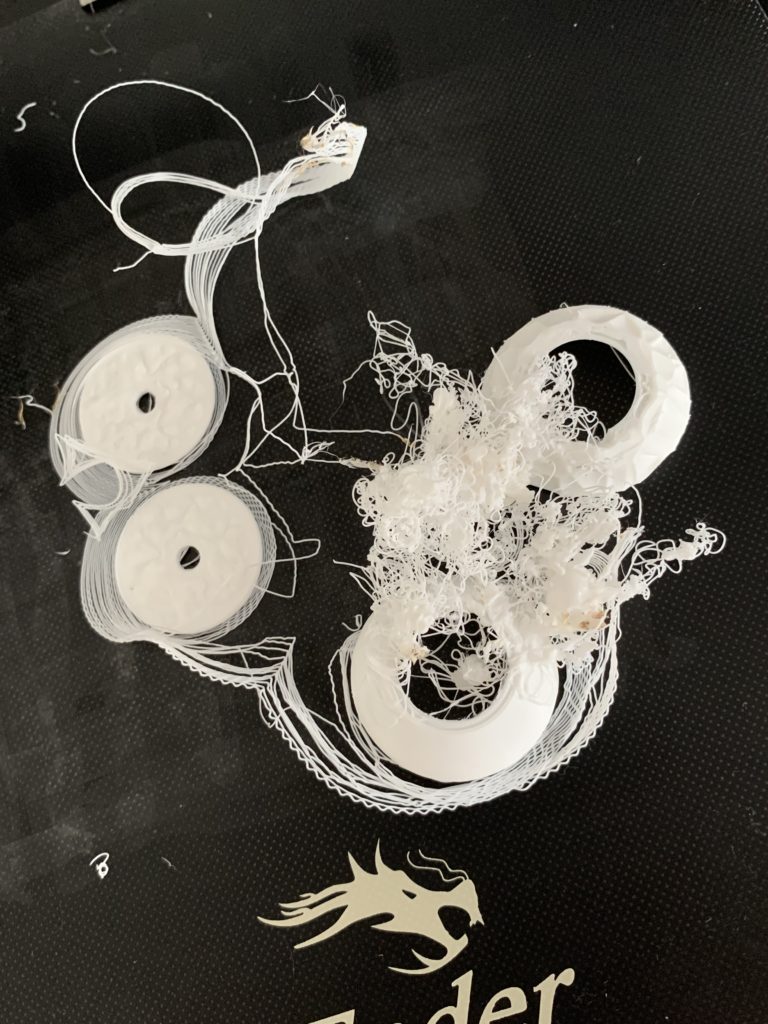
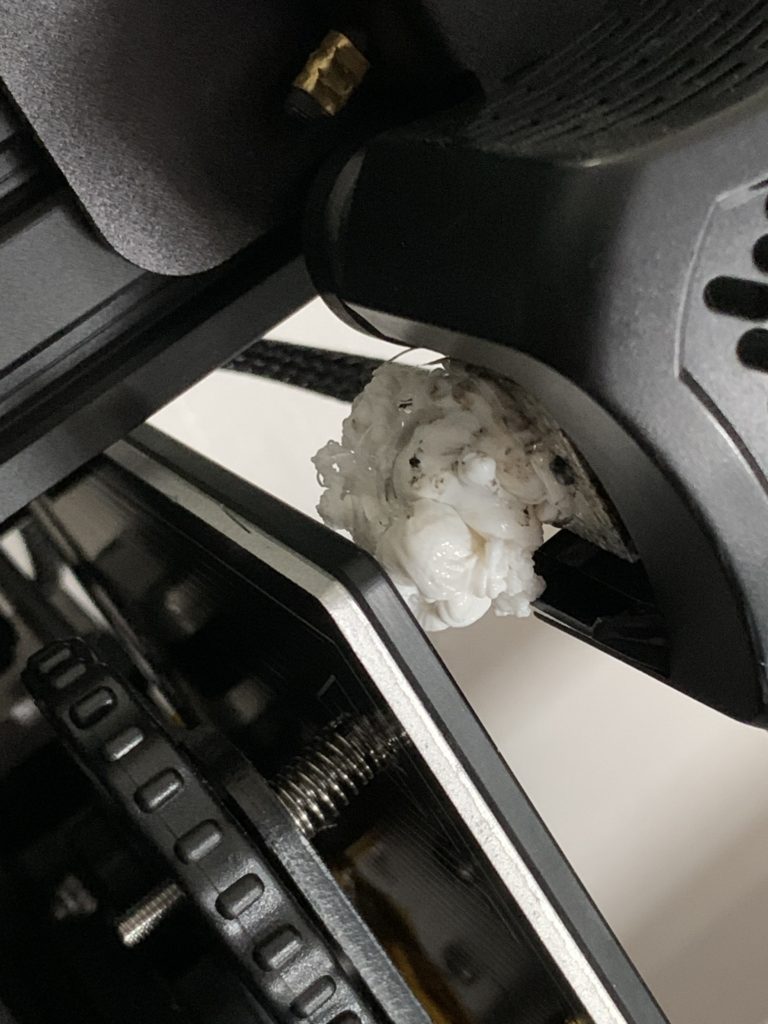
Assembly:
The trees took the most time as the clump foliage had to be slowly built up over time. Originally, I used what is commonly referred to as scenic glue. This stuff works great for setting and hardening the foliage. However, the clump foliage breaks apart when wet, so drying in the sun was the most effective method. When the sun was not present, I used an office lamp as the heat would slowly dry the glue.
Some trees had holes poked through them to allow for the wiring.
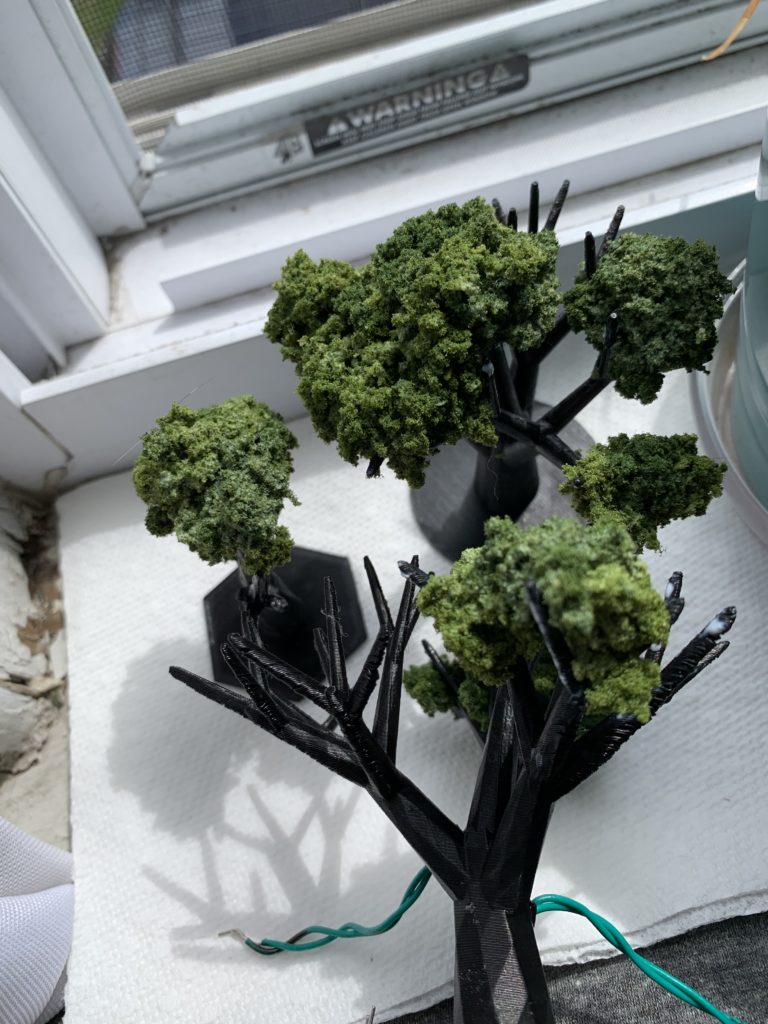
Final Product:
After everything I accomplished, it was time to put it all together. This forest can be used with many tabletop games like DnD as the size and scale are pretty close. This was somewhat intentional and will be used as inspiration if I continue this project.
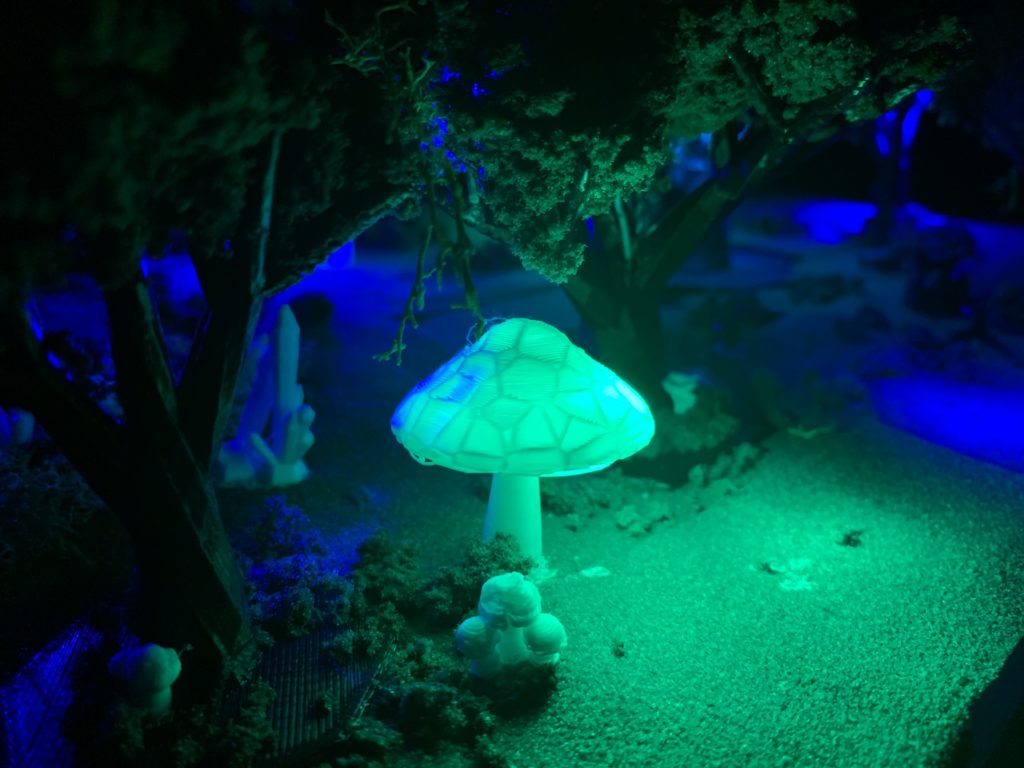

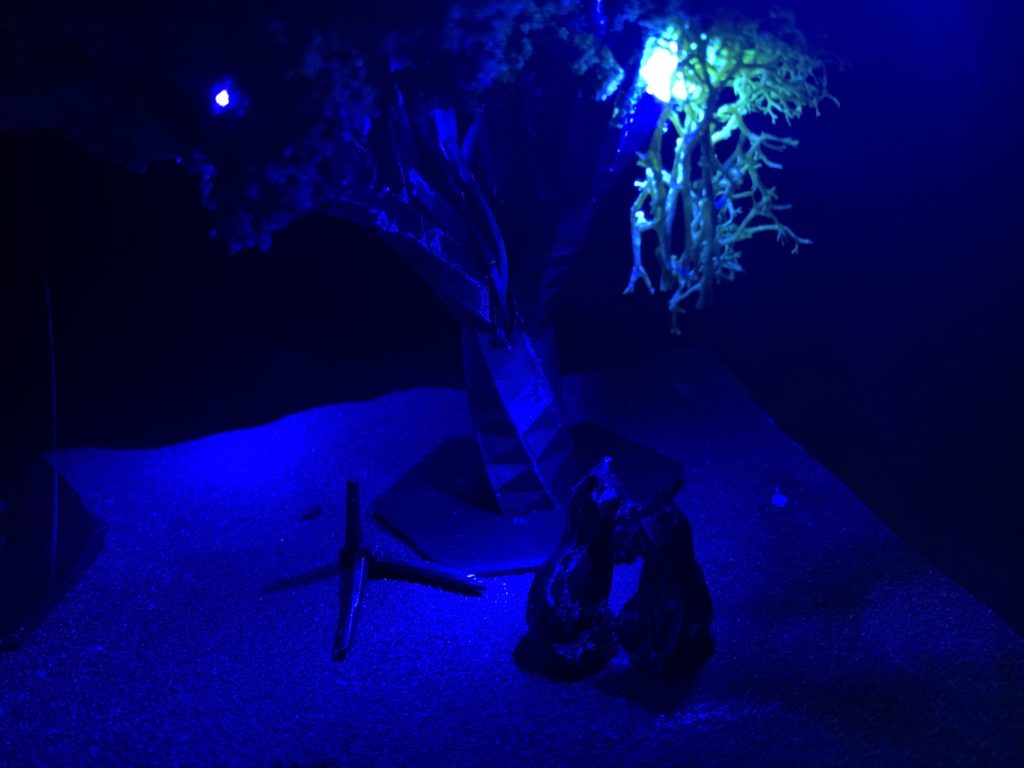
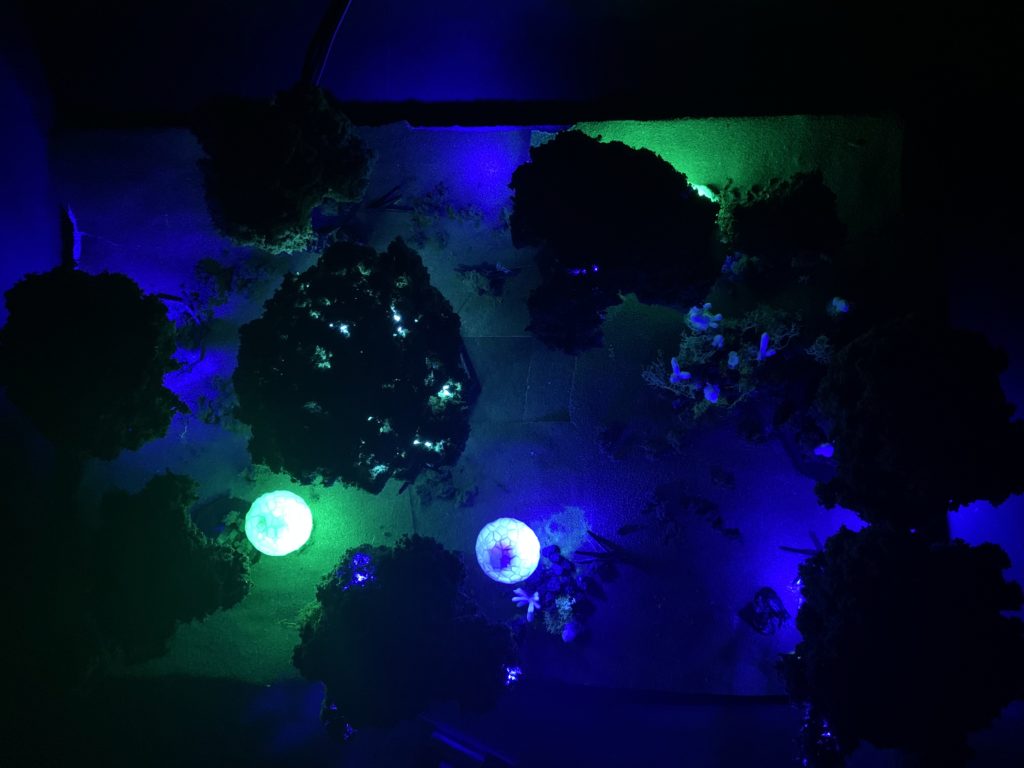
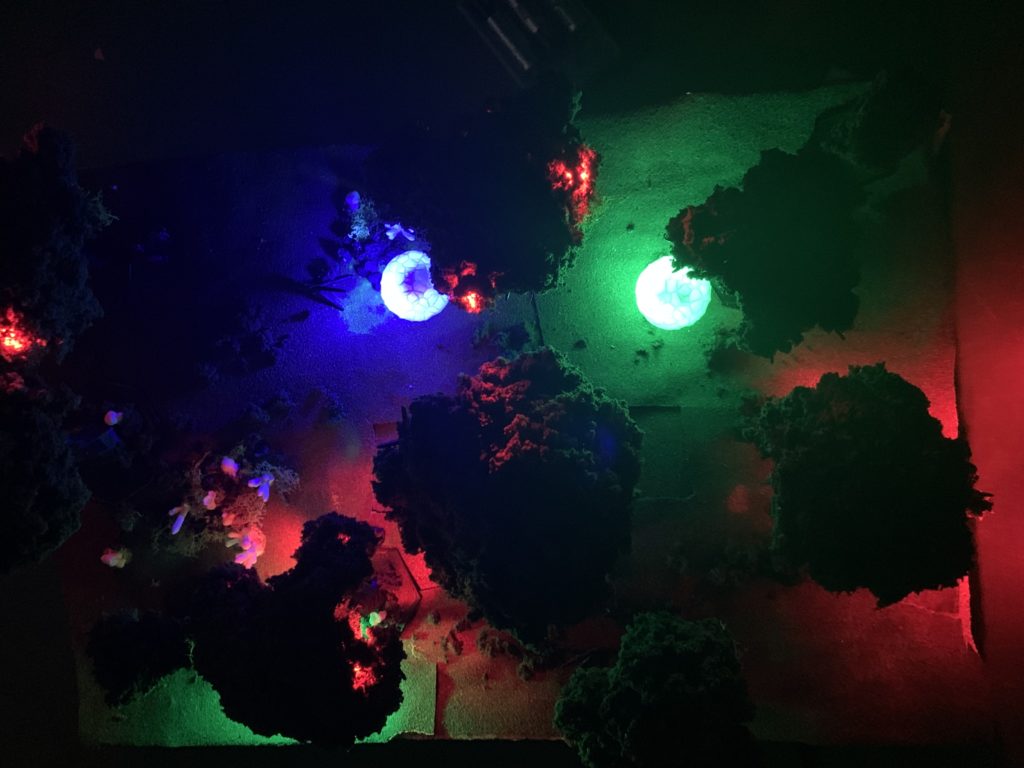
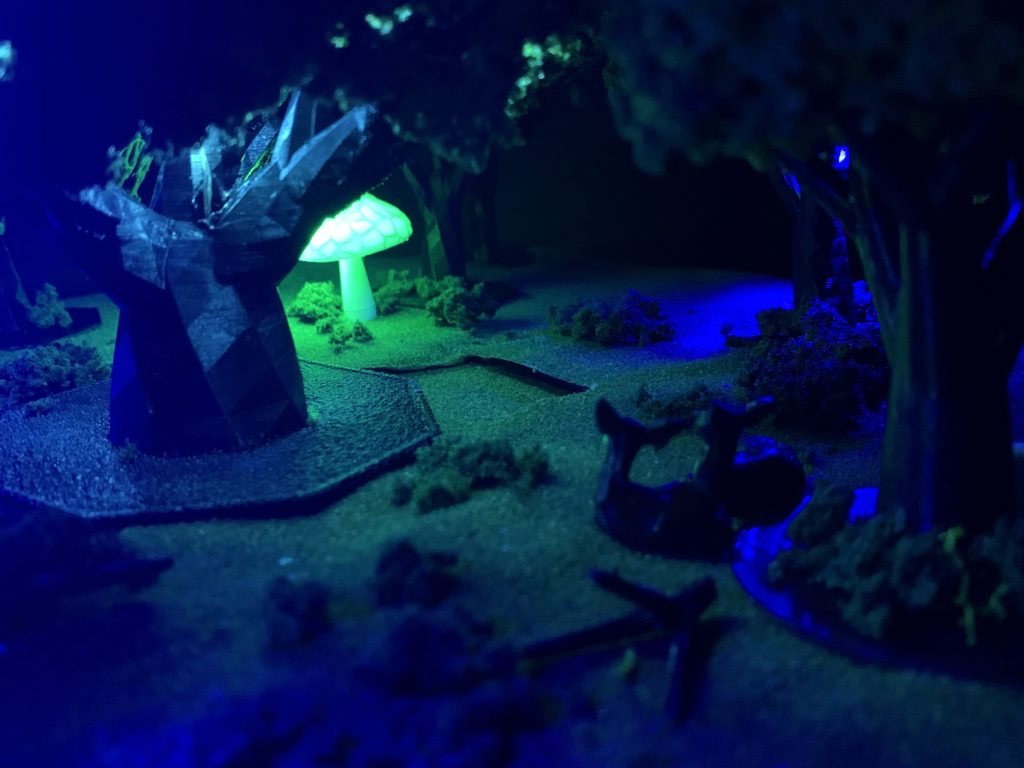
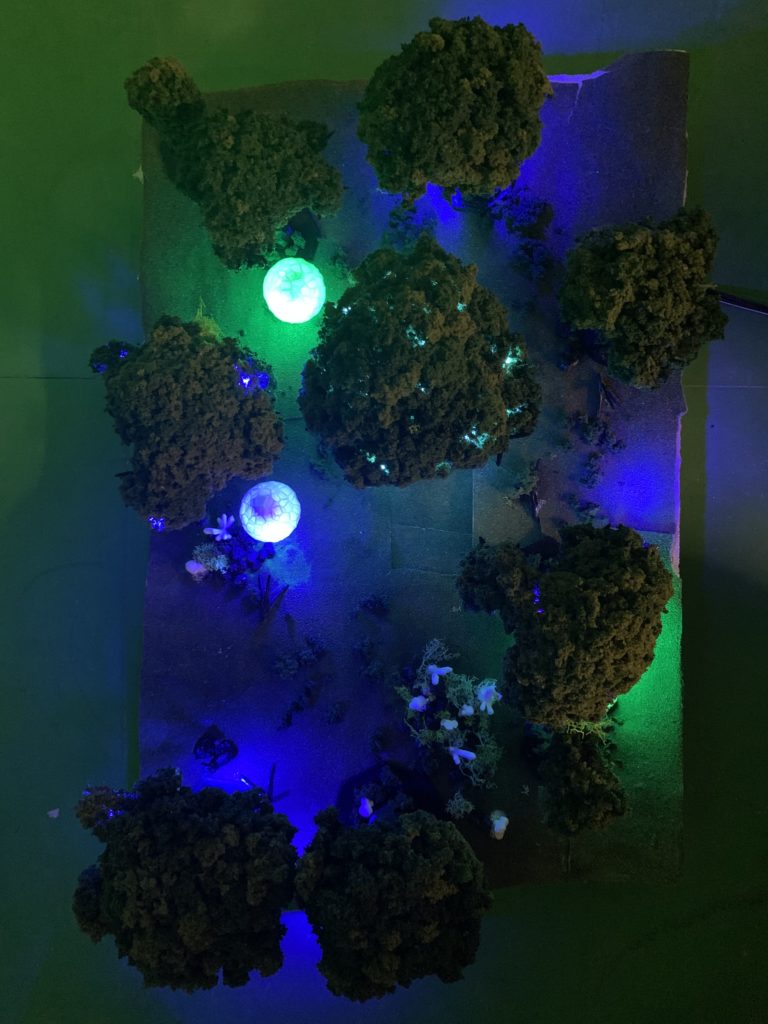
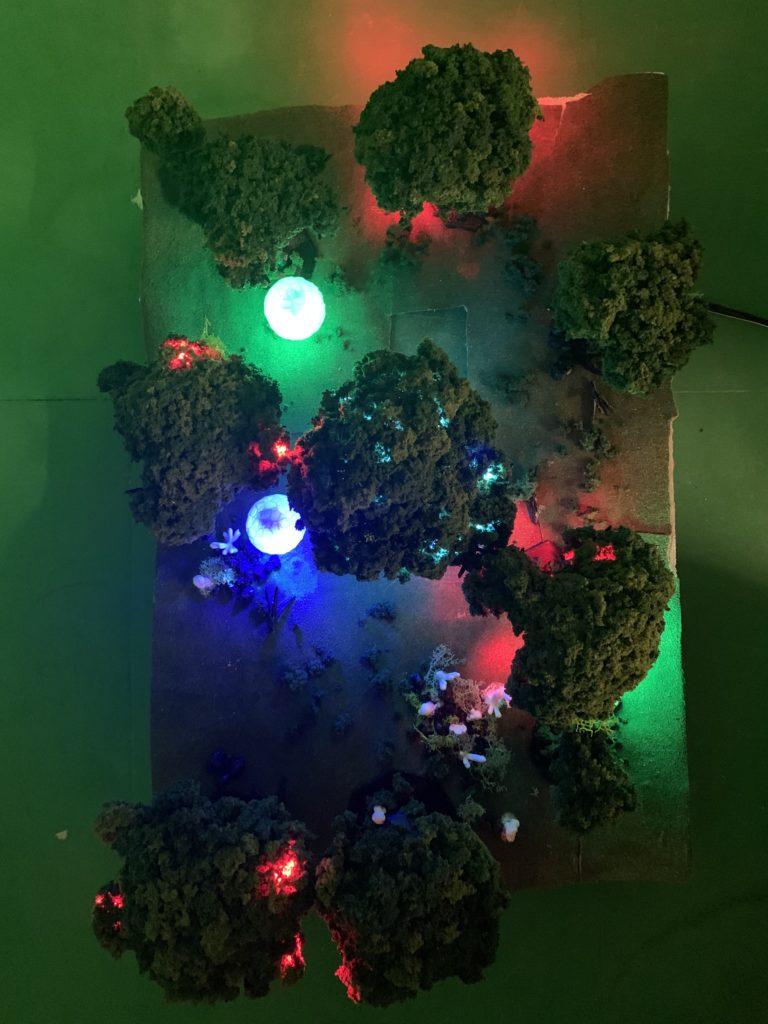
Final Thoughts:
I loved the way my trees turned out. I put all my time and effort into them, and I think it shows. The glowing mushrooms were too bright and definitely need a larger Ohm resistor. These mushrooms were the hardest thing to print and I spent too much time trying to fix them. Going forward, I would remove the trees and redo the base. While the base was great for this project, the level of polish was not up to my standards. I would abandon the turf and hand paint the base instead. I would also make the base smaller so that the trees are clumped together. Grid spaces can be added for this base to be used in a DnD game.
Sources:
Scenic Glue: https://www.youtube.com/watch?v=rphfWlU_elk
Trees: https://www.thingiverse.com/thing:279864
Crystals: https://www.thingiverse.com/thing:1775765/files
Big Mushrooms: https://www.thingiverse.com/thing:5264387/files
Small Mushrooms: https://www.myminifactory.com/object/3d-print-mushroom-collection-122517
Low-Poly Fox: https://www.thingiverse.com/thing:937740
Low-Poly Fawn: https://www.thingiverse.com/thing:906692
Low-Poly Raccoon: https://www.thingiverse.com/thing:2827080
Low-Poly Rabbit: https://www.thingiverse.com/thing:151081
Software used:
Ultimaker Cura 3.0: https://ultimaker.com/learn/welcome-to-ultimaker-cura-3-0
OpenSCAD: https://openscad.org/
The procedural tree models generated for the set are very impressive. And the low-poly texture really adds a nice flavor to the whole piece.
Honestly wish I could walk through this forest. It looks awesome. Good job <3
Not only does it look pretty, it really shows your skill when I see how simple yet powerful the circuit is. A delightful art!
I love the atmosphere that this creates – the diorama grass and foliage adds a ton to make it a believable little world. It is especially impressive that you did the logic for the magnetic switch with no microcontroller!